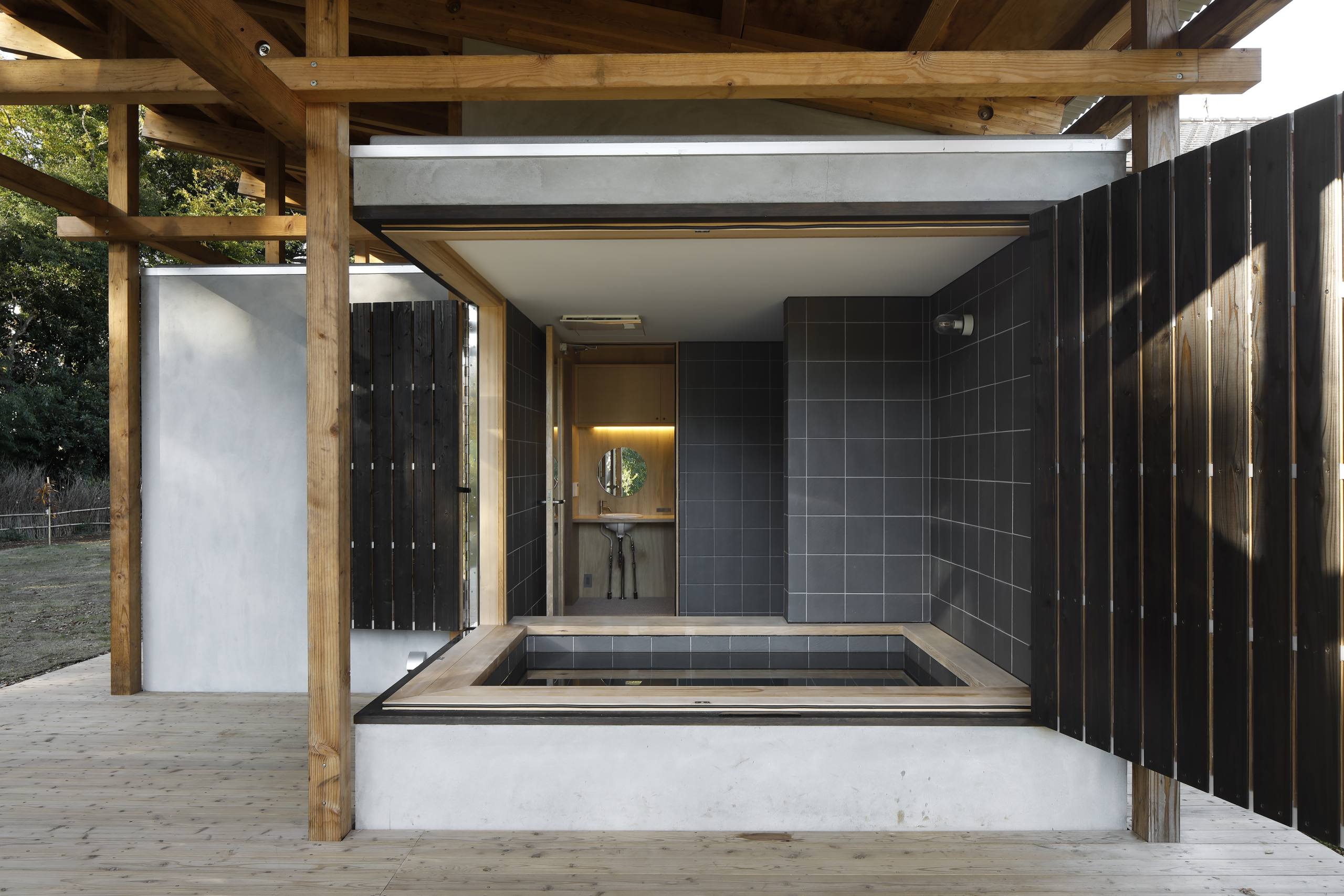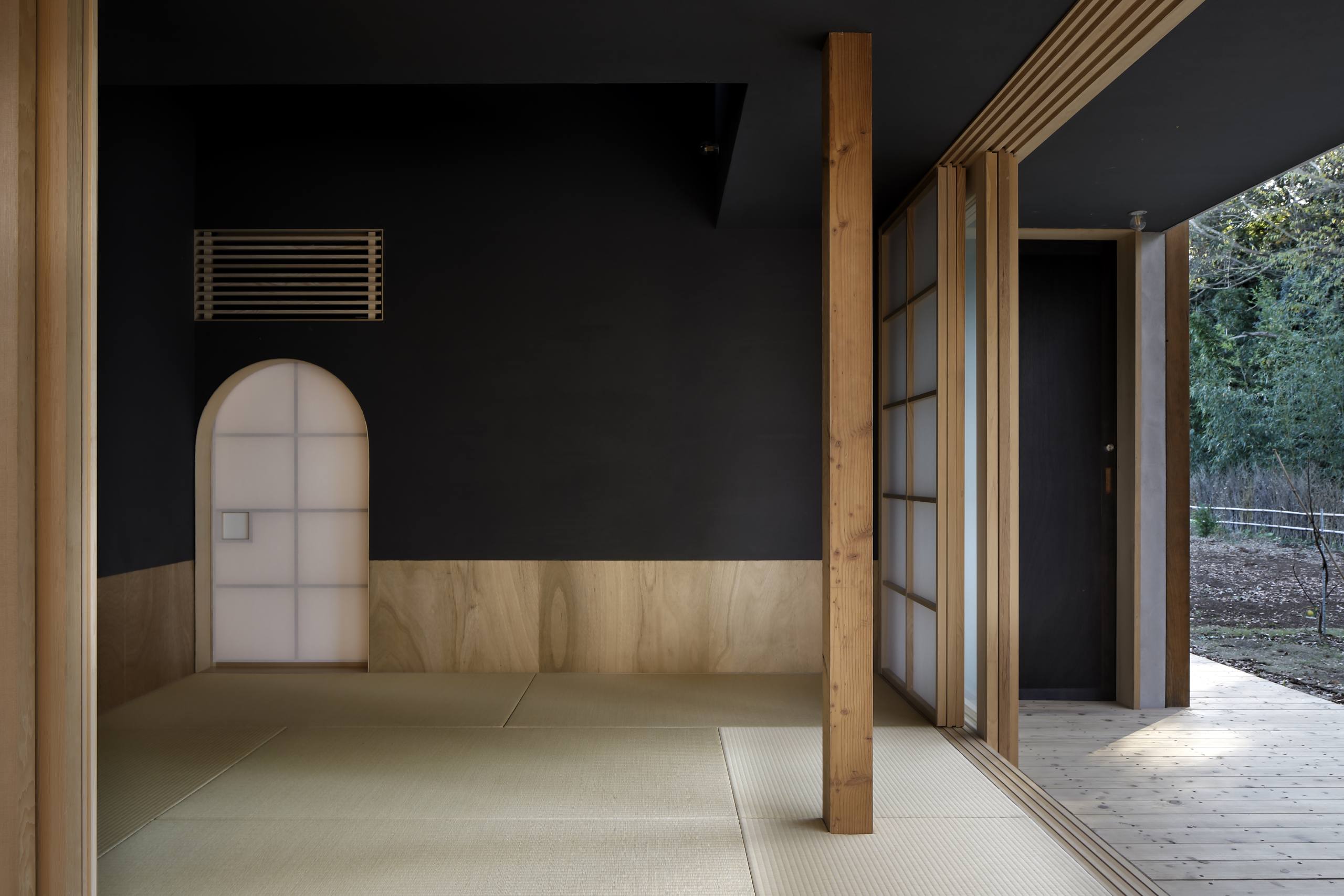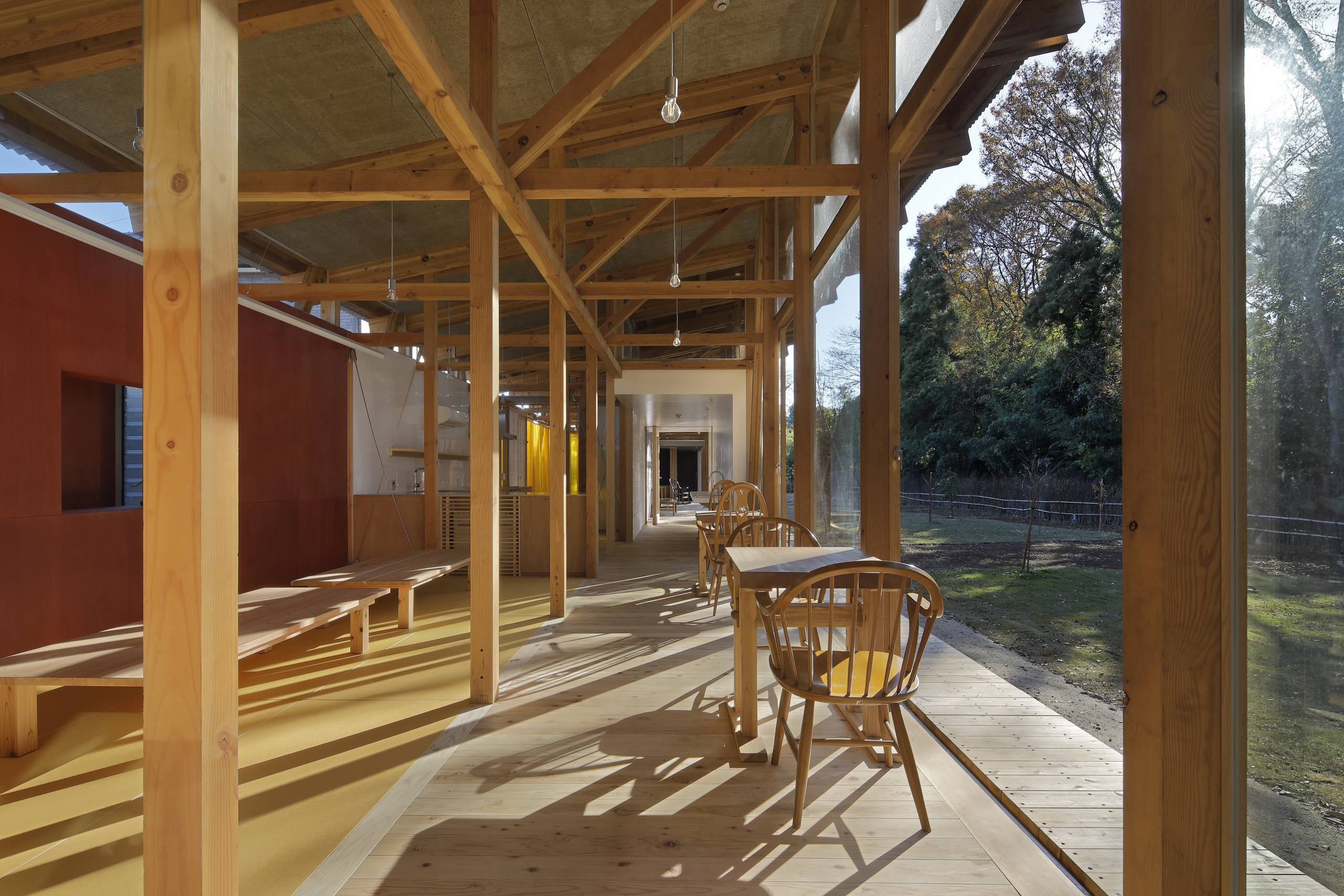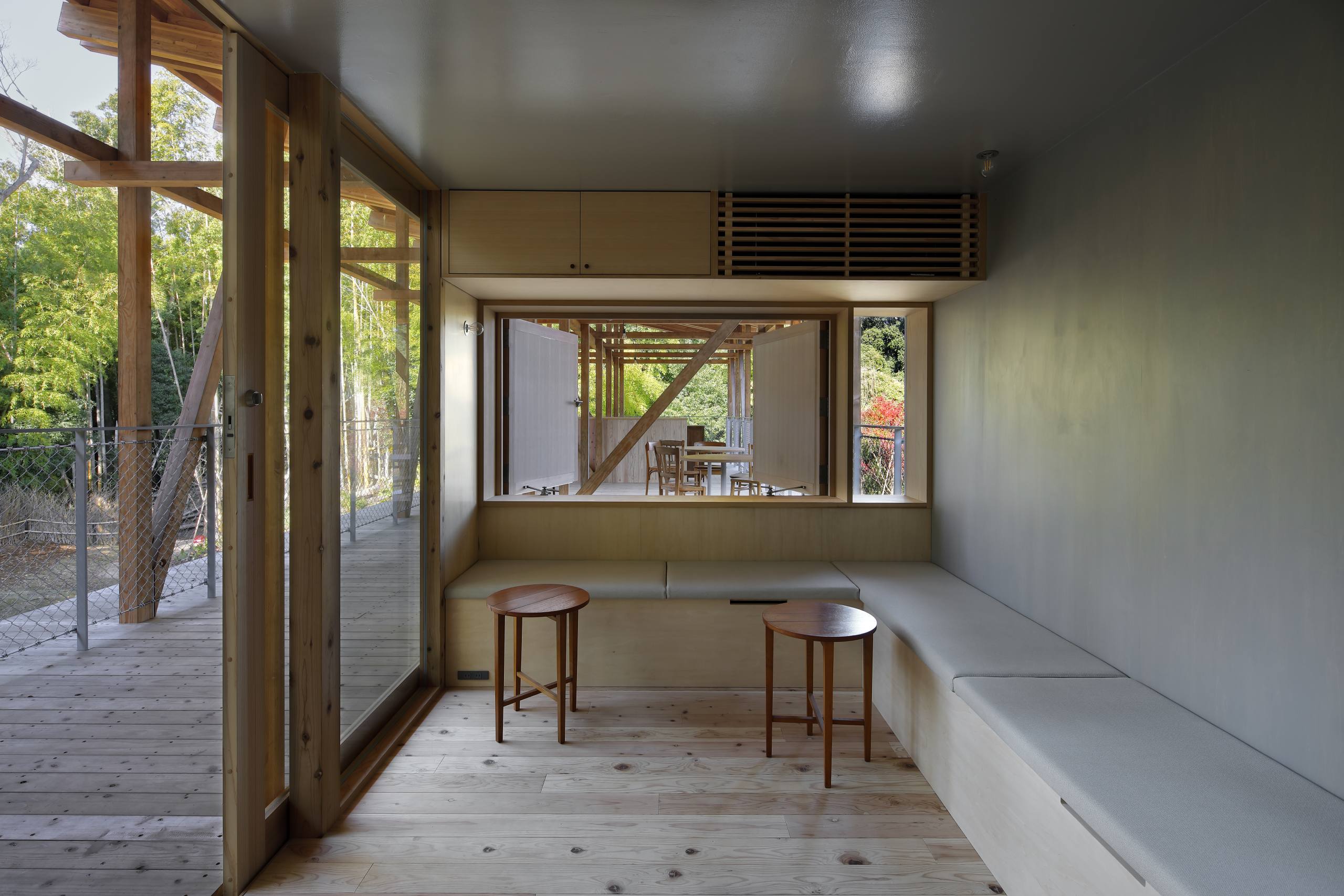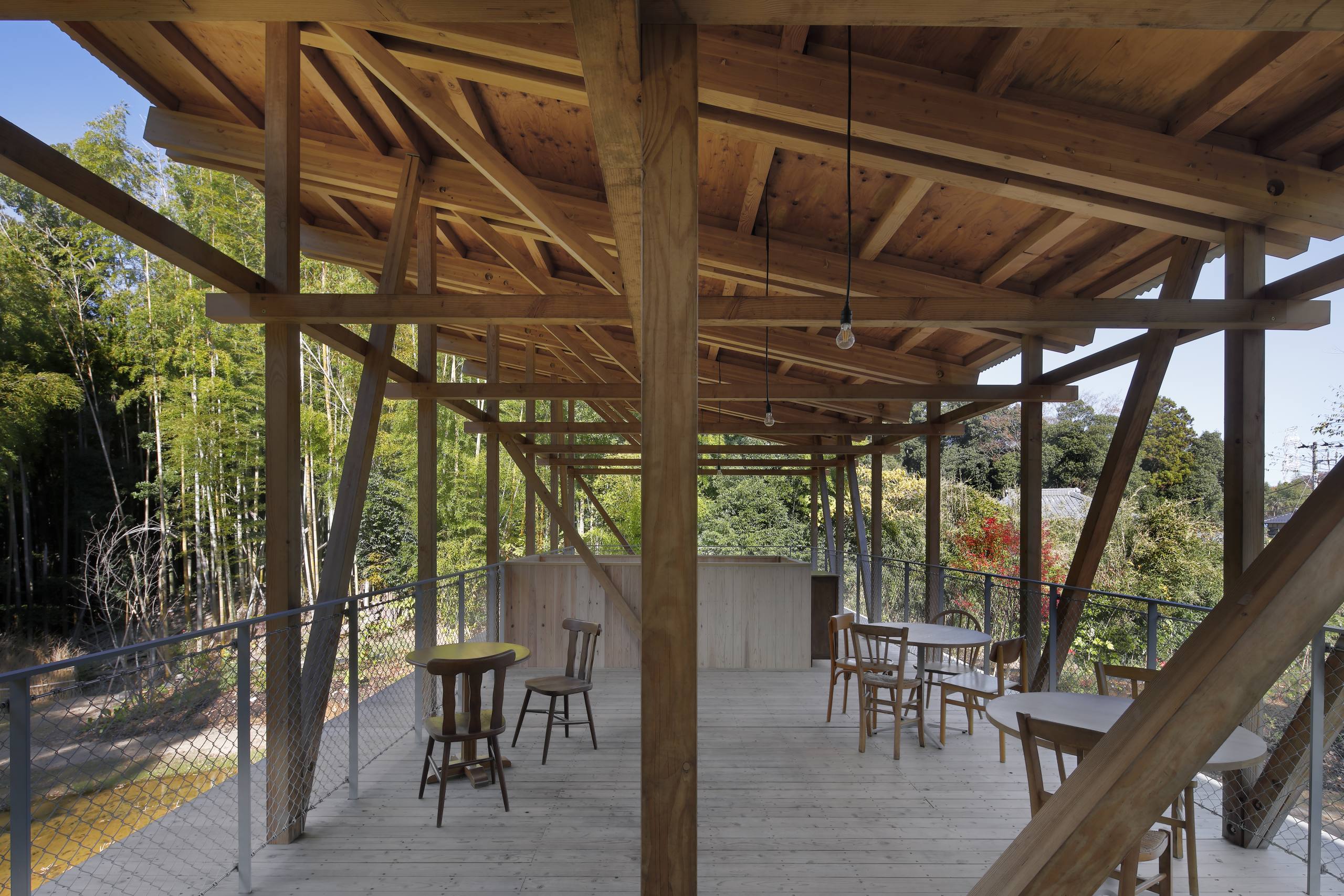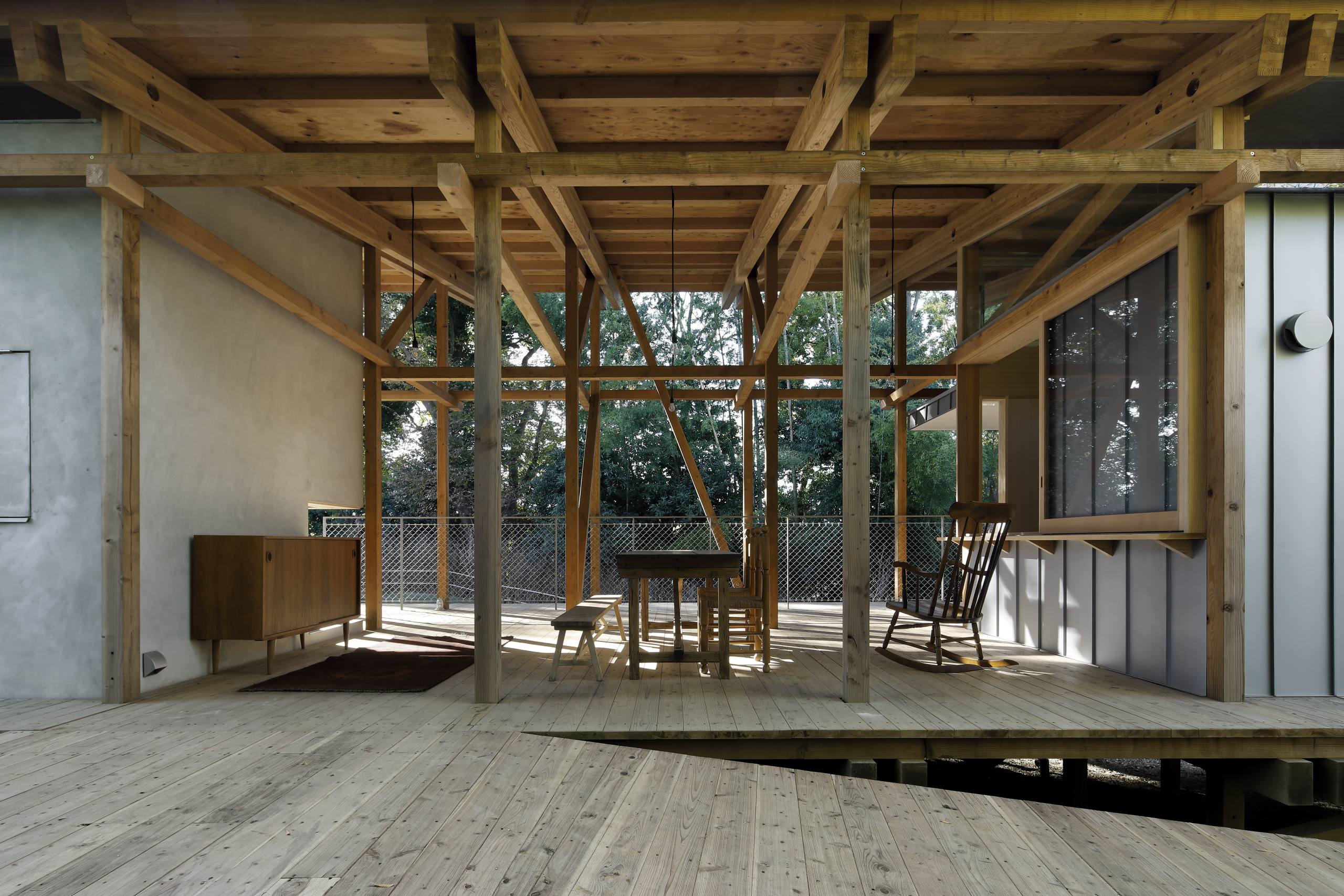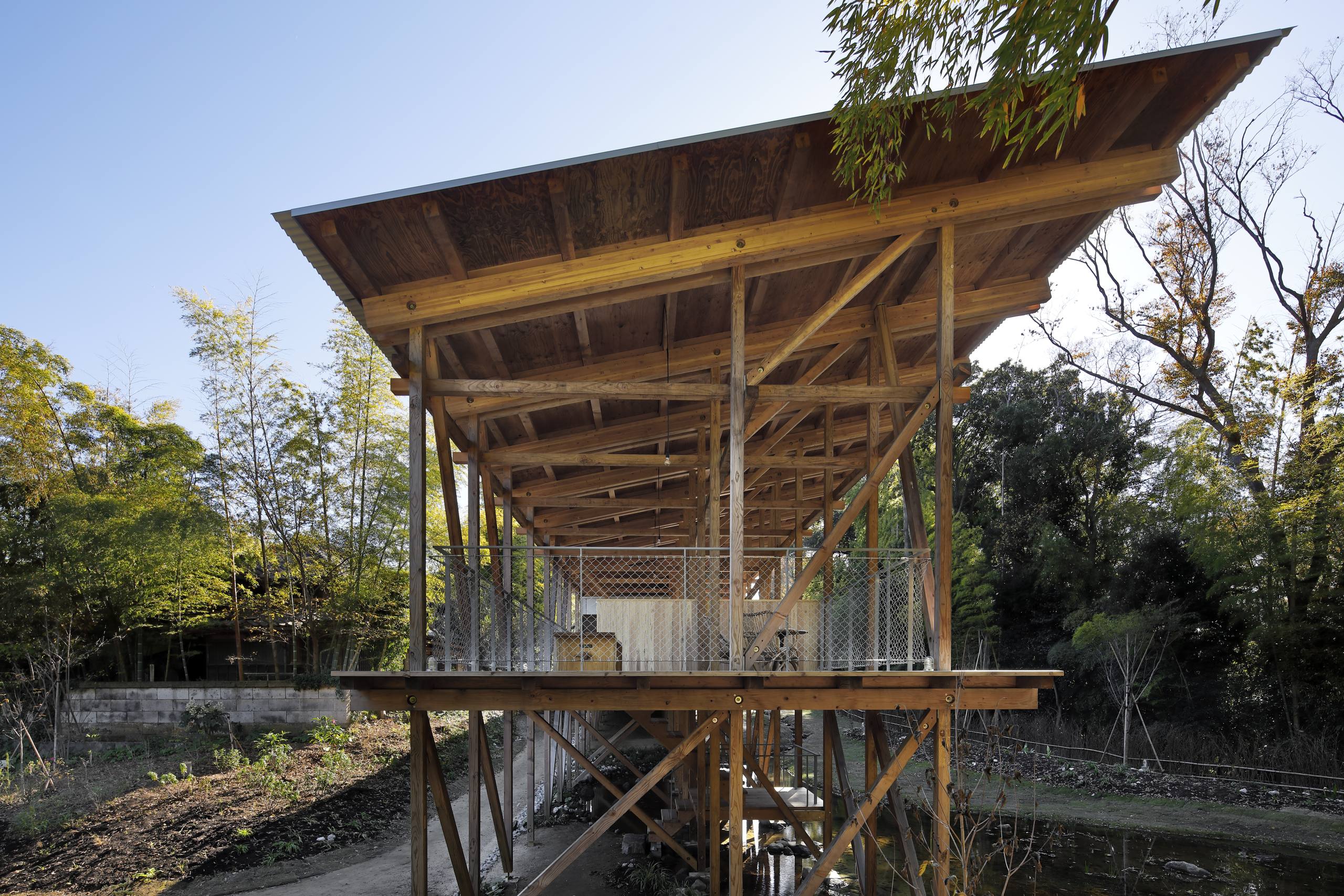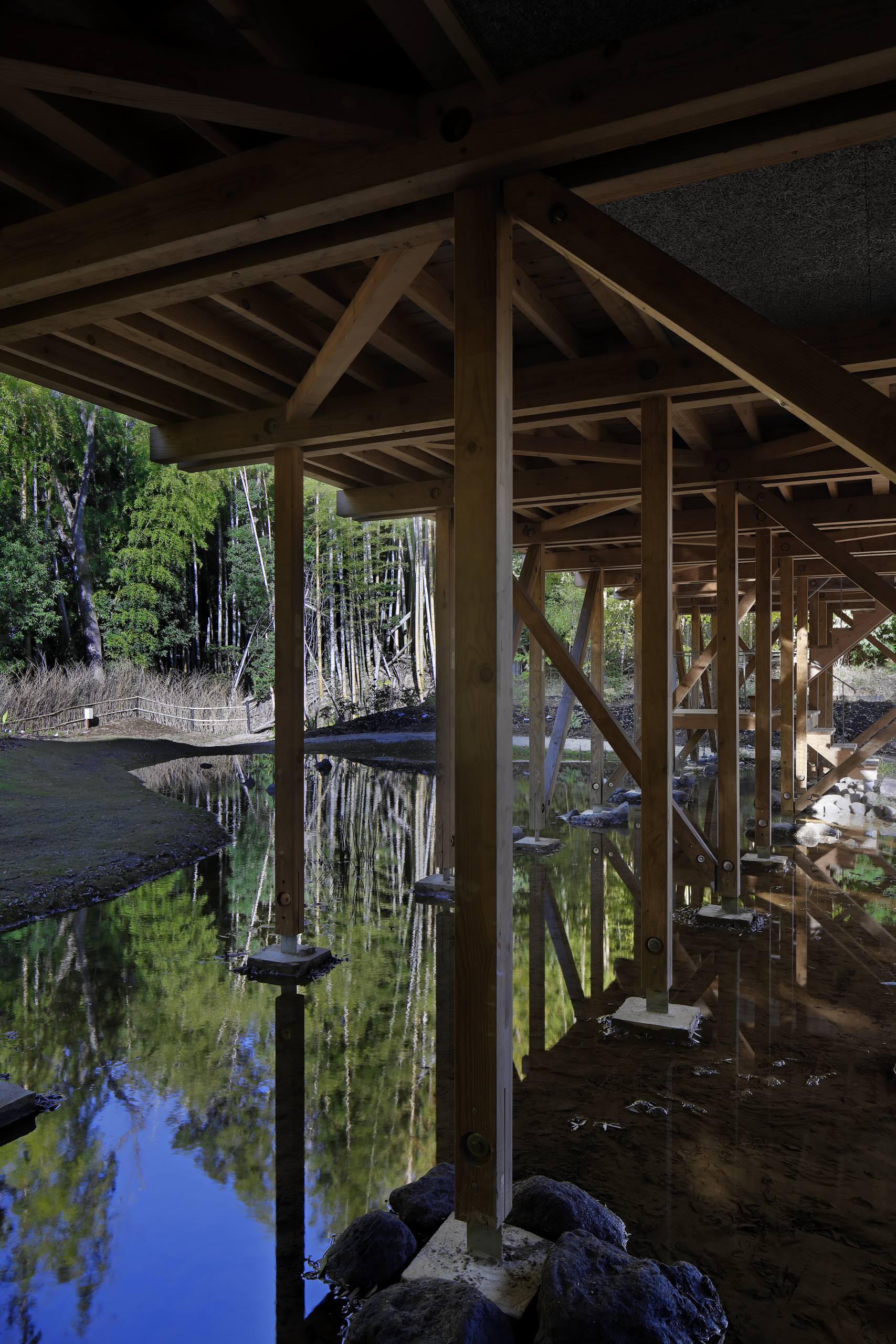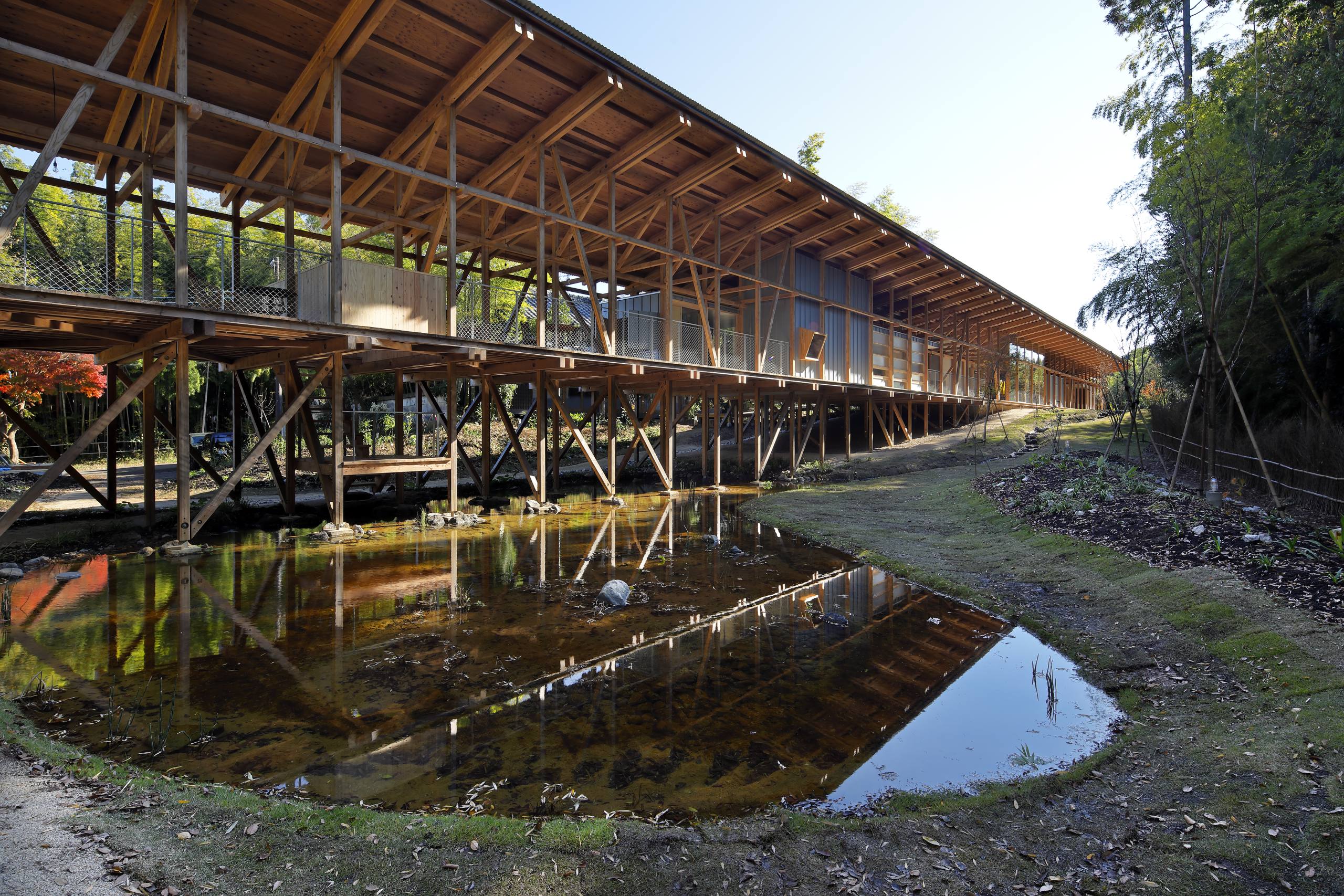Long house with an engawa/
Yamazaki Ikentaro Design Workshop
Project Details

Location(City/Country):
Yachiyo-shi, Chiba / Japan
Tipology:
Healthcare
Year (Design/Construction):
- / -
Area (Net/Gross):
493 m2 / -
Operational Carbon emissions (B6) kgCO2e/m2/y:
-
Embodied Carbon emissions (A1-A3) kgCO2e/m2:
-- A good example of lean and efficient design .
- Natural local materials are used in order to reduce embodied carbon .
- Passive solar and ventilation strategies are deployed to reduce operational energy demand.
- Biodiversity is considered in the design approach . The building touches the ground lightly in order to reduce its impact on local ecology.
“Long house with an engawa” is a senior daycare centre. The client, Mr. Ishii, is a caretaker who practises a style of care that allows people to live their lives normally, even with serious conditions like dementia. In designing this project, the goal was to create an environment in which ageing is not thought of in isolation from everyday life, even with dementia or another disability.
The site is long and narrow in the north-south orientation, and the building area was limited by regulations for building over cliffs. Despite the unfavourable conditions, we decided to lay a 2.5-ken (4.55 meters) wide veranda-like floor in a straight line welcoming the community with the main wooden structure and an open veranda that can be accessed in various ways. The building contains outdoor spaces between three main functions: a café and workshop for local residents, a “living room” for the elderly, and a tatami room and bath that echo a traditional hanare (detached room). Small walls and volumes were inserted to counterbalance the monumental structure, creating a scattering of small but human-scale spaces. Particular attention was paid to designing the boundaries between the inserted architectural elements–the windows. For example, a daybed was placed by the window between the café and the terrace, and the dimensions, fittings, and materials were selected so that people can rest their bodies in the nooks, creating an “ikata” (mode of being in place) that allows people to spend time with others even if they are by themselves.
With the cooperation of local NPOs and Mr. Ishii’s company, this building is set to become a place of belonging for many kinds of people. We all hope that it will become a safe space for single-parent families in the neighborhood who need help, or for children who are not attending school. Connections are beginning to form between the elderly, the disabled, children, and other neighbours who gather here. In order for the facility to integrate gradually into the community, the garden pond and bamboo fence were created with the cooperation of local residents. Through the lively workshop, we were able to catch a glimpse of how people from all walks of life might share their time in this place. The architecture resembles a bridge or a temple. Watching the people sitting on the porch enjoying their onigiri (rice balls), it feels like this architecture is a reminder of something important that modern Japan has lost.
|
Shuji Tada Structural Design |
|
yamada machinery office |
|
BONBORI Lighting Architect & Associates,Inc. |
|
Inada Landscape Design Office |
|
Naoomi Kurozumi |
